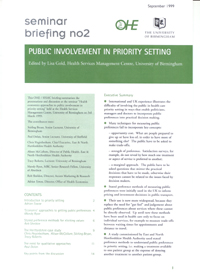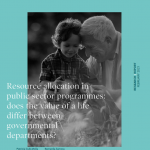Sign up to our newsletter Subscribe
Analysing Global Immunisation Expenditure

Public Involvement in Priority Setting
Gold, L. ed.
(1999) Public Involvement in Priority Setting. OHE Seminar Briefing. Available from https://www.ohe.org/publications/public-involvement-priority-setting/
